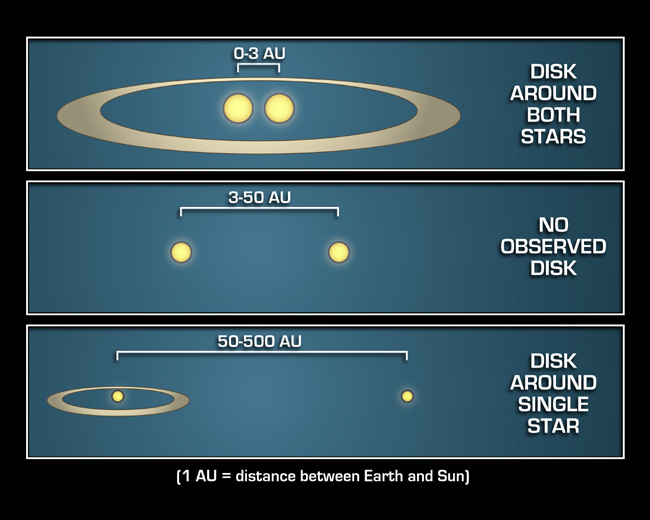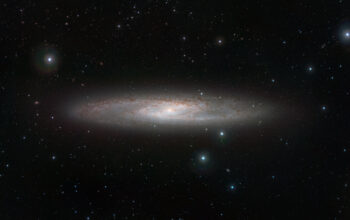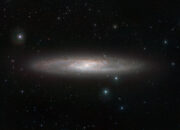The cosmos is a veritable tapestry of celestial phenomena, intricately woven with mysteries that captivate both the scientific community and the public at large. One such enigma is the existence of planets orbiting binary star systems, particularly those that feature an intricate dance of dual stellar bodies. This phenomenon evokes a profound curiosity, compelling astronomers and lay enthusiasts alike to ponder the mechanics and implications of a planet sharing its evolutionary narrative with not one, but two suns.
Binary star systems, defined as two stars gravitationally bound to each other, constitute a significant subset of the universe. Approximately half of the stars observable in our galaxy reside within binary systems or even more complex arrangements of multiple stars. Such systems provide a unique platform for examining the dynamics of celestial mechanics and planetary formation processes. When a planet is observed to orbit within a binary system, it prompts an investigation into its stability and potential habitability. The gravitational interactions between the stars significantly influence the potential environment of any surrounding planets, which adds layers of complexity to our understanding of these exoplanets.
Theoretical models suggest that a planet orbiting a binary star—known as a circumbinary planet—could indeed harbor stable orbits, provided the binary’s characteristics adhere to certain physical parameters. For instance, if the stars are separated by a considerable distance, the gravitational influence exerted on the planet may allow it to maintain a relatively stable orbital path, akin to that of a single star system. In contrast, tighter binaries introduce turbulent gravitational forces, potentially leading to chaotic orbits for nearby planets.
Additionally, the mass distribution and the luminosity of the binary stars play an instrumental role in determining the environmental conditions on the orbiting planet. The complex interplay of stellar radiation and gravitational pull can engender ecosystems with unique attributes, significantly differing from those found in solitary star systems. Furthermore, the habitable zone—the region around a star where conditions might be right for liquid water to exist—shifts based on the combined luminosity and energy output of both stars in a binary configuration. This nuanced understanding ignites discussions about the potential for life in such captivating locales, as the presence of dual suns could lead to fantastical scenarios of perpetual twilight or extreme seasonal variations.
The fascination surrounding double star systems is not merely limited to the plausibility of life, although that is a central thrust in contemporary astrobiological debates. The mere existence of a planet in orbit around a binary system is a testament to the diverse possible outcomes of cosmic evolution. It poses fundamental questions about the conditions that facilitate planetary formation: How do accretion discs around binary stars differ from those around singular stars? What mechanisms give rise to planets in such intricate gravitational environments? These inquiries reflect a larger desire to understand our place within the universe and the conditions necessary for the emergence of life.
Moreover, the observation of circumbinary planets contributes to the growing repository of knowledge concerning exoplanetary systems. The transiting planets method, employed by space observatories such as Kepler and TESS, has revealed an astonishing array of planets across various stellar architectures. The discovery of planets within binary star systems like Kepler-16b—an exoplanet that resides within the habitable zone of its binary stars—serves as a robust example of nature’s propensity for complex astrophysical arrangements. The presence of such faux-upon-faux phenomena fosters interdisciplinary collaboration among astronomers, physicists, and exoplanetary scientists, emphasizing the vitality of contemporary astrophysical research.
This intrigue extends beyond academic circles; the public’s imagination is drawn to the aesthetic and philosophical implications of double star systems. The concept of multiple suns illuminating a planetary surface evokes imagery not only in science fiction but also in broader discussions about civilization and culture. The narratives developed around these exotic worlds permeate literature, art, and even film, enriching our collective consciousness with the possibilities of unique earth-like environments under diverse celestial configurations.
Yet, the exploration of circumbinary planets raises significant methodological challenges. Detecting and characterizing the atmospheres and surface conditions of these planets necessitates sophisticated instrumentation and innovative observational techniques. Current technologies must evolve to better distinguish the subtle variations in light that these systems produce. Advances in spectroscopy, for instance, will be crucial for establishing the presence of atmospheric constituents that indicate habitability, such as oxygen, methane, or water vapor, across multiple stars.
In conclusion, the mystery of double stars and the planets that orbit them is emblematic of humanity’s broader quest for understanding the nature of the universe. The synthesis of theoretical models, observational discoveries, and speculative musings drives the narrative forward, creating a multifaceted dialogue about our cosmic environment. As astronomers continue to peel back the layers of this exquisite multilayered tapestry, the interplay of myriad forces that govern the formation and stability of planets in binary star systems remains a deeply enthralling frontier in the field of modern astronomy. The quest to unravel these mysteries opens pathways to understanding not just the cosmos, but also the fundamental principles that underpin existence itself.










